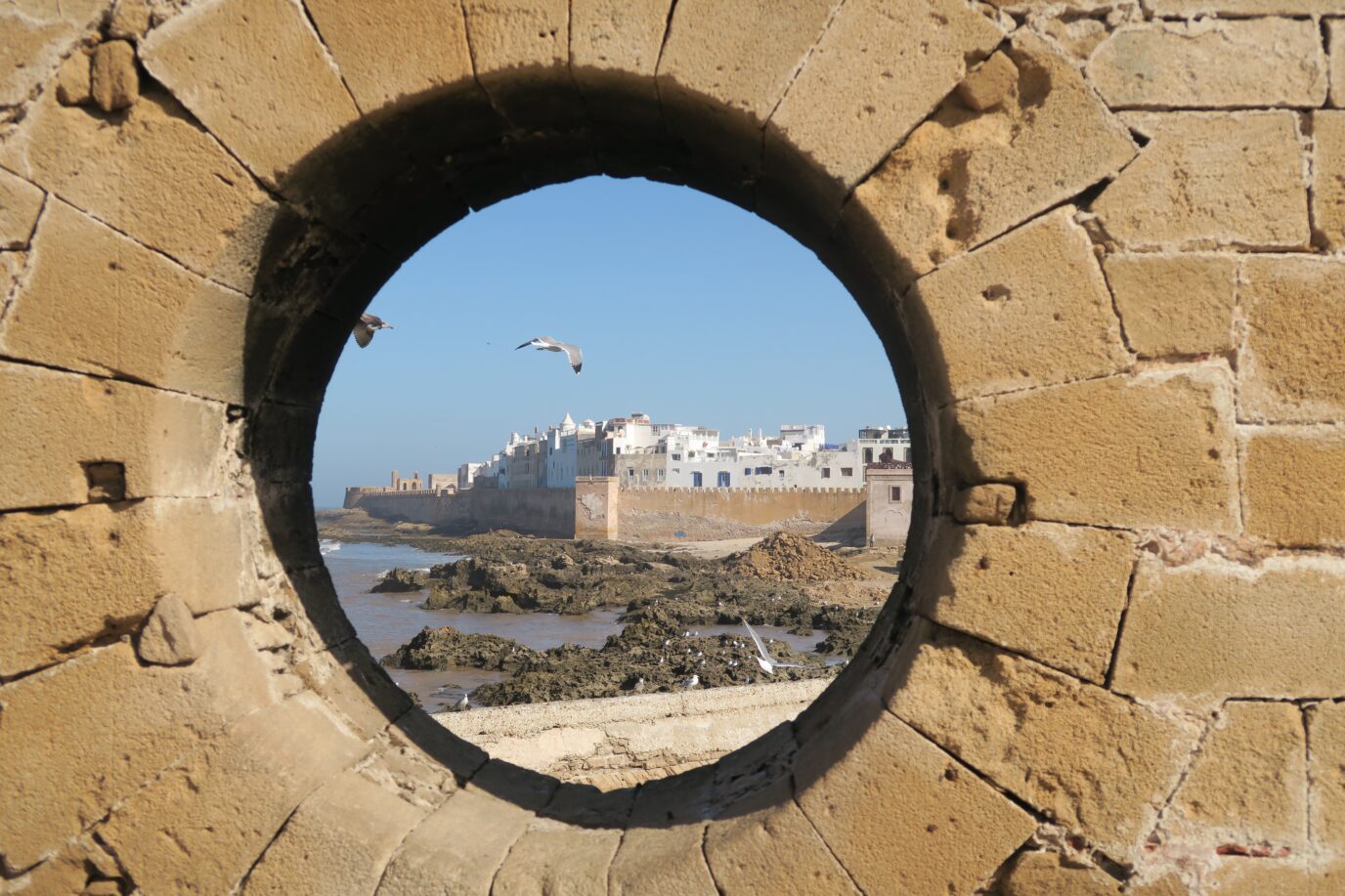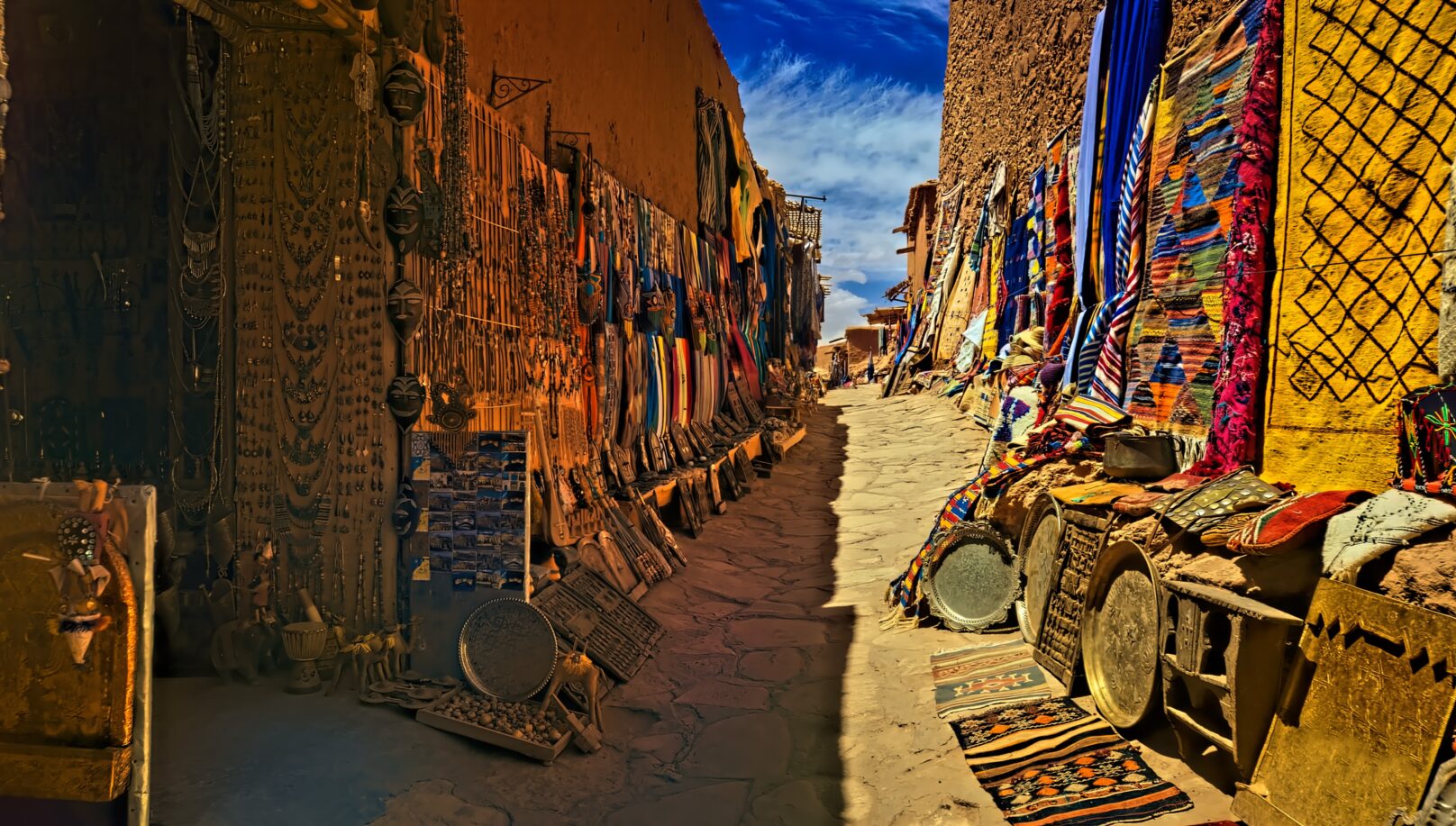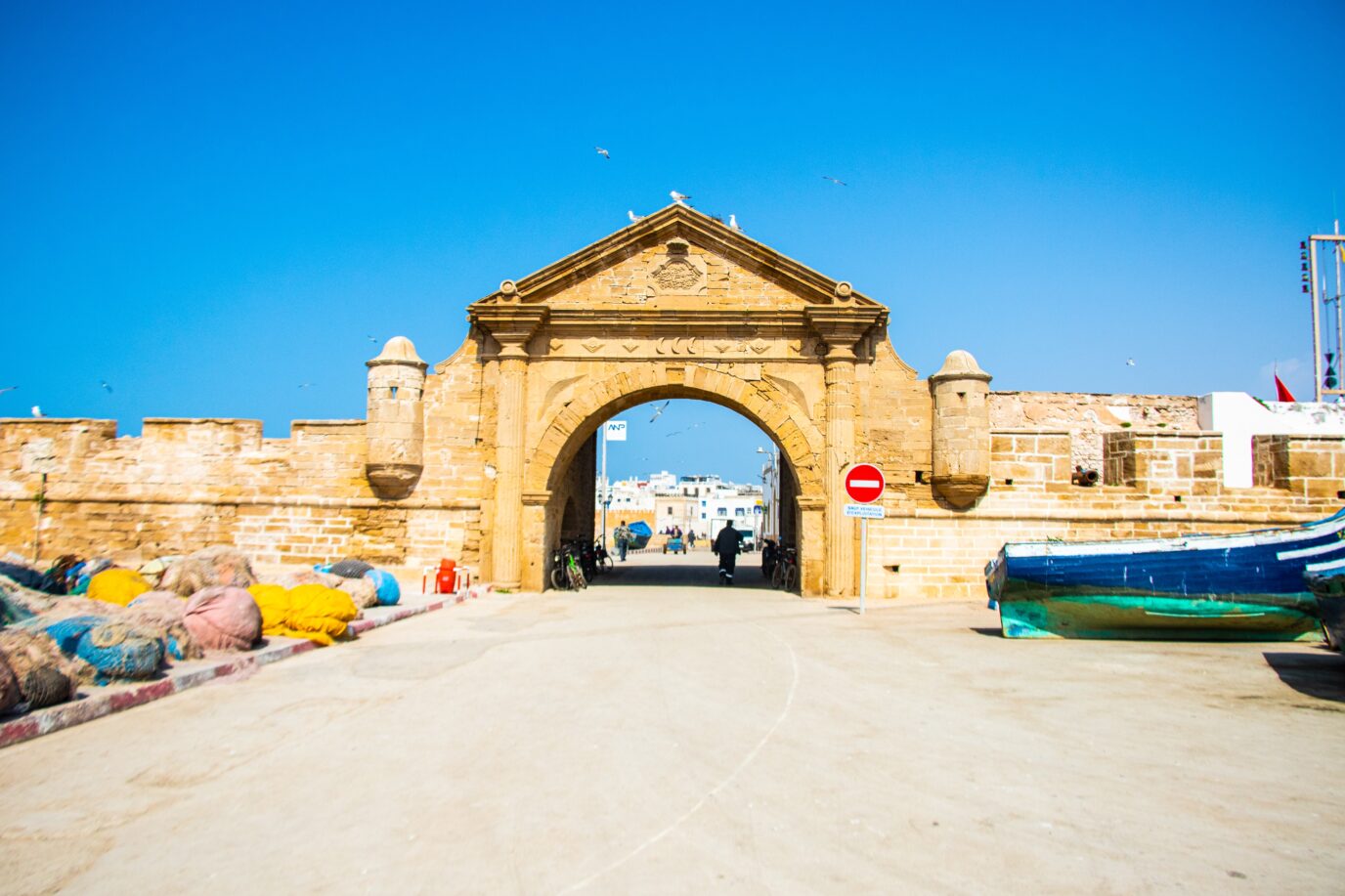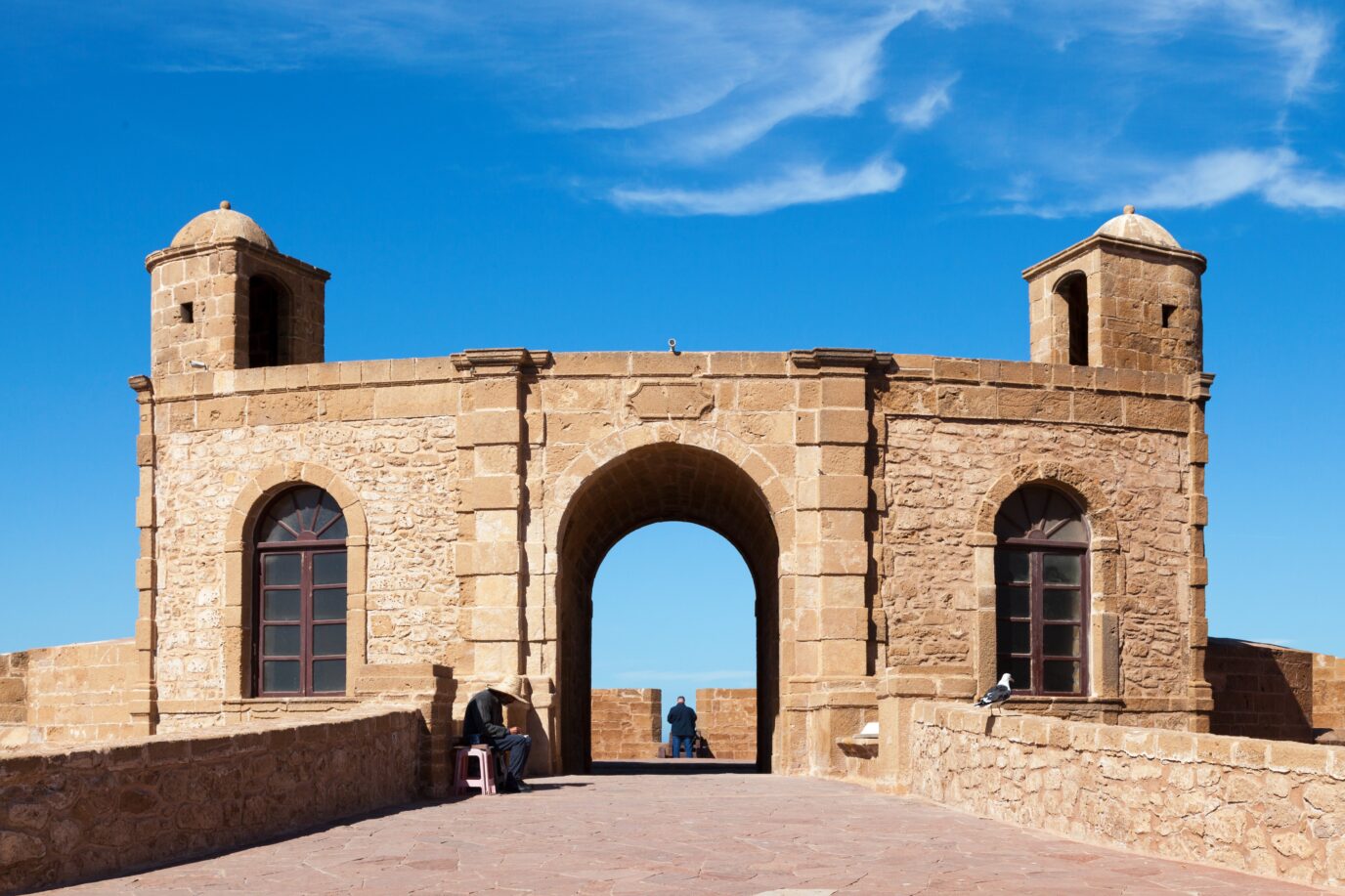Essaouira, which has a population of over 77 966 and is located on Morocco’s Atlantic coast, is regularly blasted by trade winds. It is a beautiful town with one of Morocco’s best beaches and a fascinating history, which has made it one of the most fascinating sites on the entire Atlantic coast of the country.
Essaouira
Essaouira has long been a crossroads of peoples and civilizations as a good port city. From the 5th century BC, it rules by the Phoenicians and Carthaginians, and later by the Romans, who were primarily known for its purple production: they occupied the islets off its coast to exploit the mollusk used to obtain the purple color. The Archaeological Museum in Rabat houses artifacts from the purple towns and factories of the Island of Mogador.
When the Portuguese arrived in the 16th century, they were renamed Mogador. Among the most exciting places to visit in Essaouira, the famous Portuguese constructions were built here. It was later taken and re-founded in 1764 by Sultan Sidi Mohamed Ben Abdellah, who gave the city its current name. He decided to make a port that would overshadow the city of Agadir to promote maritime trade. Furthermore, during this sultanate, the town took on its current form in the Medina’s main monuments and the city’s defensive structures. It has since been inhabited by Arabs and Amazightribes and a significant Jewish colony that enjoyed greater freedoms and privileges than the rest of the country. The Port of Essaouira was one of the most important until the French Protectorate took it away, diverting its activity to the Port of Casablanca.
Why Visit Essaouira ?
As a result of the large influx of tourists, primarily French, the city has become a cosmopolitan summer resort and one of the area’s leading tourist destinations. Walking through its beautiful Medina can become overwhelming during the summer when it is busiest.
One of the most notable features of Essaouira is its European grid-shaped layout and urban areas surrounded by ancient bastions, as envisioned at the end of the 18th century. Even though it is becoming increasingly popular with tourists,
Essaouira is still an excellent choice for people who want to visit Morocco but do not want to experience the hustle and bustle of the larger towns. Tourism is booming in this area due to its exceptional spas, natural reserve on Mogador Island, and Medina, designated as a UNESCO World Heritage Site.
Its crafts are diverse and rich, bearing witness to cultural exchange. Furthermore, the’ souiri,’ known locally, are masters of goldsmithing, marquetry, and cabinetmaking, particularly in ‘thuya’ wood. It also has other treasures, such as Argan oil, and fishing is an essential industry due to its fishing port. Indeed, Essaouira’s artisan shipyards are the city’s heart, making it unique.
Top Attractions in Essaouira
The streets and gates of Essaouira
We could make a long list of things to do in Essaouira. For example, its lovely Medina consists of wide streets lined with galleries leading to many artisan workshops, small shops of all kinds, cafes, and restaurants.
Gates of the historic city
Walking through the Medina’s three main gates (Bab Sbâa, Bab Marrakech, and Bab Doukala), you’ll find busy streets, painted houses with blue doors, and a market full of fresh food, spices, and fish. Thanks to its well-organized layout, it is easy to get to important sites like the Clock Tower and Ibn Youssef Mosque.
Bab el Menzah
Bab el Menzah is the main entrance to the Medina. It is close to Bab Sbaa, which links the old city to the new town. Moulay Hassan Square is nearby and has places to relax, with coffee shops where people can drink mint tea. The busy port is reached by going through Puerta de la Marina. Here, traditional boats are still built by hand.
Skala de la Kasbah
We get to Rue Skala from Place Moulay Hassan. It runs next to the walls of the Medina. The forts in the city are a unique mix of Portuguese, French, and Amazigh military architecture, which gives them a mysterious air. A 200-meter-long stronghold called Skala de la Kasbah has a row of old cannons facing the sea that visitors can see. This citadel, which was built by Sidi Mohamed Ben Abdallah to protect the city, has stunning ocean views.
Bab Labhar
The Bab Labhar gate, built during the neoclassical sultanate of Sidi Mohammed Ben Abdallah, leads from Moulay Hassan square to the Port. We arrived at one of the most unusual and lively places to visit in Essaouira, filled with boats and fishing boats. There are numerous stalls where we can eat cheap fish and seafood.
Skala du Port’s tower
The famous Essaouira fortress has beautiful views of the harbor from the Skala du Port tower, where tourists can take pictures during certain times. Seagulls can be seen flying above. The graves by the water can be reached from Bab Marrakech and Bab Sebaa, and the Mellah can be reached from Rue Allal Ben Abdallah.
Where to Stay in Essaouira
Heure Bleue Palais
This is a high-class riad in the middle of the Medina. It has beautiful rooms, a rooftop pool, and decor that mixes Moroccan and Spanish styles.
Sofitel Essaouira Mogador Golf & Spa
A five-star resort with beautiful ocean views, a golf course, a spa, and a style that mixes modern and Moroccan elements that are great for unwinding.
Villa Maroc
This cute boutique hotel has a cozy atmosphere, traditional decor, and patios with sea views that make you feel like you’re in Essaouira.
Hotel Le Médina Essaouira Thalassa sea & spa – Mgallery
This seaside hotel has a thalassotherapy spa, large rooms, and direct access to the beach. It is the perfect place for a luxurious getaway by the water.
Exploring the Culture of Essaouira
Local Culture: Essaouira has a rich cultural history, including Arab, Berber, and European elements. The city’s Medina is a UNESCO World Heritage site famous for its old buildings, busy shops, and strong arts community.
Food: Essaouira is famous for its seafood, and people there eat a lot of fresh fish and shrimp. Tagine, couscous, and other traditional Moroccan foods can also be found in the city’s many restaurants and food stands.
Music: Essaouira is where the famous Gnaoua music style began. This style blends African, Berber, and Arab styles. The city hosts the Gnawa World Music Festival every year, which brings musicians and tourists from all over the world.
Clothing: Men in Essaouira often wear djellabas, and women wear colorful kaftans or traditional dresses. This shows how different Morocco’s culture is. There are also many new styles in the city, though.
Things to Do in Essaouira
You can shop in the Medina
The Medina in Essaouira is a great spot to shop. You can find one-of-a-kind items like jewelry, leather goods, and woodwork. The souks have many bright clothes, traditional rugs, and pots. Don’t forget to check out the craft classes to see how the items are made.
Things to do at sea and on the beach
People know the city for its lovely beaches and lots of sea life. You can kite surf, sail, or ride a boat along the coast to see what it offers. You can also relax by the water or walk along the beach walkway.
Touring historic sites
The historic Skala de la Kasbah offers a great view of the water and the harbor. Check out the guns on the Skala du Port and enjoy the beautiful harbor. The old Jewish area (Mellah) and the Essaouira Citadel, which has a lot of history and beautiful views of the sea, are two places you shouldn’t miss.
Taste of Fresh Seafood
People go to Essaouira to eat fresh fish. You can pick your fish out at the busy fish market near the port and have it cooked there. Many places by the water serve tasty seafood, like grilled sardines, prawns, and calamari, so foodies should definitely go.
Best Time to Visit Essaouira
Spring (March to May): The weather is mild and pleasant in the spring, with temps ranging from 18°C to 25°C (64°F to 77°F). This makes it a great time to explore the Medina and do things outside, like walking on the beach and seeing sights.
Summer (June to August): It gets hot in the summer, but the breeze from the coast cools the city down, making it great for beach activities like sailing. It gets crowded with people, so make plans ahead of time.
Fall (September to November): Temperatures are warm, ranging from 20°C to 27°C (68°F to 81°F), making it a great time to be outside and see the sights. Because of the nice weather, there aren’t as many people at the beach as there were in the summer.
The winter months are December through February. The temperature ranges from 12°C to 20°C (54°F to 68°F). Being cooler makes it a more peaceful time to visit, with fewer tourists. It’s great for people who like calm weather.
How to Get to Essaouira
by air
Essaouira-Mogador Airport (ESU) is the closest airport, about 15 km from the city center. It has flights to and from important cities in Morocco and Europe domestically and internationally.
By Bus
From Marrakech, Agadir, and other big towns in Morocco, you can take a comfortable and cheap bus to Essaouira with CTM and Supratours, among others. The trip takes about three hours.
By Car
Renting a car is an excellent choice if you want to be flexible. The trip from Marrakech to Essaouira along a beautiful road takes about two to three hours.
By Taxi
From nearby cities like Marrakech or Agadir, you can also take a grand taxi, which is a shared taxi. This is a cheaper choice than taking the bus or renting a car.





